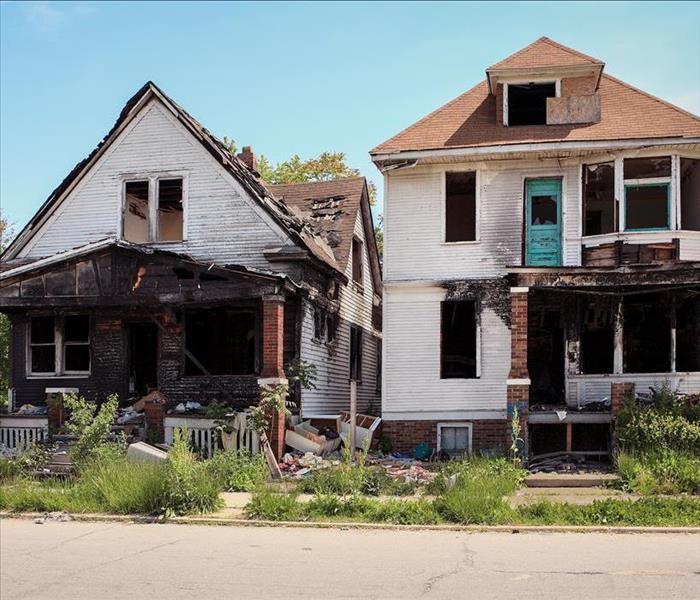Step-by-step Guide to the Fire Restoration Process
2/15/2023 (Permalink)
 With professional help, it's possible to get your home back on track in no time at all after a fire.
With professional help, it's possible to get your home back on track in no time at all after a fire.
A fire is one of the most devastating things that can happen to a homeowner. It can completely destroy your property and even lead to life-threatening situations. However, with professional help and a well-executed fire restoration process, it's possible to get your home back on track in no time at all. Here's what the average fire restoration process looks like.
Call the Experts
Once the flames have been put out, the first step in the fire restoration process is to call in the experts. A qualified professional will assess the damage, determine how much damage has been done and give you an estimate of what it will cost to fix it. They'll also make sure that their equipment is up to snuff and that they have the manpower necessary to tackle the job.
Contact Your Insurance Company
Next, it's time to contact your insurance company. Give them all the necessary information about your claim and ask for a copy of your policy so that you can review it later. Your restoration company will also handle this process for you if they are involved with restoring damaged property. They also know how to handle insurance claims and will work with your insurance company through the claim so that you can get paid as quickly as possible without having any problems along the way.
Water Extraction
Water extraction is the removal of water from a property. The accumulation of water can be due to fire suppression systems or firefighting efforts.
Water removal is the first step of the actual mitigation and restoration process as it is one of the most important steps. Removing the moisture as quickly as possible after a loss is important in order to avoid further, unnecessary damage to your property. The equipment used for this process varies depending on the size of your home and how long it's been since the fire occurred.
Debris Removal
After the fire, your property will be filled with debris. This includes:
- All damaged materials and furniture
- All damaged walls and ceilings
- All damaged insulation
- Any destroyed or damaged appliances
- Any personal property that has been damaged, such as clothing, jewelry, and electronics
Soot and Smoke Removal
Soot and smoke removal is the next step of fire restoration. This process removes soot and smoke stains from walls, ceilings, floors, and other surfaces. Soot removal can be accomplished by using specialized equipment to remove any soot and smoke that may still be present in your home.
If you have experienced a fire in your home or business building it is important to make sure that all areas are completely cleaned before moving forward with any repairs or reconstruction work. It's also important to note that professional cleaning services should always be used when performing this type of work because they will ensure proper results while reducing the risk of spreading contaminants throughout other rooms in your house or office building.
Restoration
Restoration is the process of making your property look like it did before the fire. Restoration is the most important part of the fire restoration process and will take place after the mitigation has been completed. If you are unsure about what to do next in restoring your home, we would be happy to help!
This step can take anywhere from several weeks up to several months depending on how extensive repairs were needed.
A well-executed fire restoration process can help get your property back to normal. It is important to know what to expect from this process and how long it will take before repairing your home or business after a fire. The steps we outlined above should give you a better idea of what goes into restoring damaged property after an incident like this one occurs. We hope this guide has been helpful for those who are looking for information about the fire restoration process!





 24/7 Emergency Service
24/7 Emergency Service